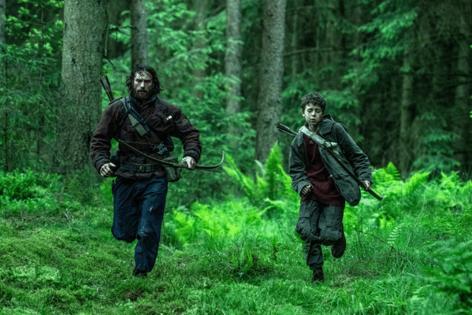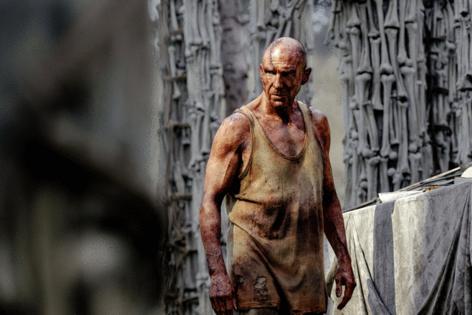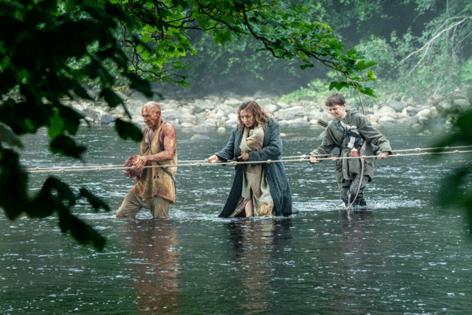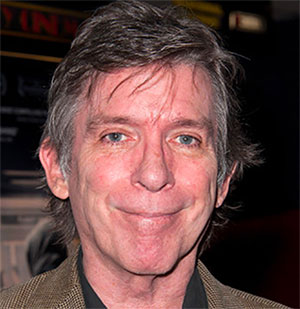'28 Days Later' review: Boyle returns with visceral, prequel-like sequel
Published in Entertainment News
It certainly feels as though director Danny Boyle has longed to return to the postapocalyptic world he and writer Alex Garland created with 2002’s “28 Days Later.”
That critically acclaimed slice of stark-and-edgy horror saw the so-called “rage virus” turn many people in the United Kingdom into mindless, aggressive, human-eating machines, leaving the non-infected in a desperate fight for survival.
After yielding the director’s chair to Juan Carlos Fresnadillo for 2007’s generally well-received sequel, “28 Weeks Later,” Boyle has returned, with Garland, for “28 Years Later,” which rages into theaters this week.
And we do mean “rages.”
“Years” is an often intense affair, one colored by Boyle and director of photography Anthony Dod Mantle’s use of iPhones (reportedly, the iPhone 15 Pro Max), drones and other less-conventional filming techniques to give the film a gritty look. Accentuated by dramatic editing choices and appropriately unsettling music and sound work, that aesthetic echoes the work the pair did with “Days,” which was shot on digital video.
This new film pulls you in and insists you almost literally experience the near-constant danger faced by its characters, some of whom exist on an island in relative safety away from the infected.
That’s the good.
The bad?
This third entry in the franchise seems most concerned with setting up installments to come, starting with director Nia DaCosta’s “28 Years Later: The Bone Temple,” which reportedly was filmed back to back with this movie and is slated for release in January.
“Years” actually begins, well, 28 years ago, introducing us briefly to a scared boy and his man-of-the-cloth father, who embraces the coming of the infected into his church, believing this to be judgment day.
On-screen text follows, reminding us that the virus laid waste to the U.K., which was quarantined to contain the evil, with survivors there being left to fend for themselves. (We learn later that modern society continues elsewhere, complete with smartphones and product deliveries.)
Some of those survivors live on Lindisfarne, aka Holy Island, which is separated from England’s mainland by a heavily guarded causeway accessible only during low tide. It is here that we meet a family: Jamie (Aaron Taylor-Johnson); his wife, Isla (Jodie Comer); and their 12-year-old son, Spike (newcomer Alfie Williams).
Isla spends much of her time in bed, frequently disoriented and in intense discomfort, due to some undiagnosed condition — there is no doctor in the community — and on this day is too enraged to learn (or, technically, relearn) Jamie is taking Spike into the mainland for the first time on a scavenging mission.
Many in the village are excited for the apprehensive Spike, as this is a rite of passage, but Jamie is reminded by a woman at the gate on their way out that 14 or 15 is the typical age for this experience. She also impresses upon Spike that if he does not return, no rescue operation will be conducted — the community has lost too many people in that type of endeavor.
Jamie's and Spike’s experience on the mainland is as harrowing as you’d expect — maybe more — but something he sees while there leads him to learn of the possibility that there may be a doctor to whom he can take his mom. It’s worth the risk to him, so Spike creates a distraction, allowing him to lead the confused Isla along the causeway and into the dangerous but potentially life-saving territory.
Along the way, they encounter Erik Sundqvist (Edvin Ryding), a Swedish soldier from a NATO patrol boat, the three of them soon coming in contact with an infected woman in an unusual situation. (It’s a sequence that’s best left unspoiled.)
We’ve been led to believe that in the legendary Dr. Ian Kelson, we’ll find something akin to Colonel Kurtz. However, while Ralph Fiennes kind of looks like Marlon Brando’s infamous character from “Apocalypse Now,” he’s something quite different — even if he does have a very specific and elaborate way of honoring the dead.
Fiennes, an Academy Award nominee for last year’s “Conclave,” breathes life into “28 Years Later” right when it needs it with a terrific performance. Comer (“Killing Eve”) turns in admirable work, and Williams — in his feature debut — holds his own, but compelling moments are lacking after Taylor-Johnson (“Nosferatu”) is sidelined and before Fiennes enters the fold.
In terms of the writing, though, you’d expect something more, something deeper, from writer-director Garland (“Ex Machina”) — or at least you would have before last year’s wildly disappointing “Civil War.” Perhaps we’re missing it, but, as with “Civil War,” it seems as if he has little to say here.
Do Boyle and Garland tell a complete tale? Well, there’s a conclusion to the movie’s primary plotline. However, it seems clear that many of the characters will return for “Bone Temple,” which is set up in this film’s final moments.
Also penned by Garland, “Bone Temple” could be worth the wait, as DaCosta (“Candyman,” “The Marvels”) has talent — and because the film is believed to include the return of “28 Days Later” star Cillian Murphy.
It is believed Boyle will then return to helm a third and final “28 Years Later” chapter, completing the Marvel Cinematic Universe-ing of this world.
“This potential trilogy is off to a solid — if not spectacular — start, though more bite would have been welcome.”
———
‘28 YEARS LATER’
2.5 stars (out of 4)
MPA rating: R (for strong bloody violence, grisly images, graphic nudity, language and brief sexuality)
Running time: 1:55
How to watch: In theaters June 20
———
©2025 The News-Herald (Willoughby, Ohio). Visit The News-Herald (Willoughby, Ohio) at www.news-herald.com. Distributed by Tribune Content Agency, LLC.


















Comments